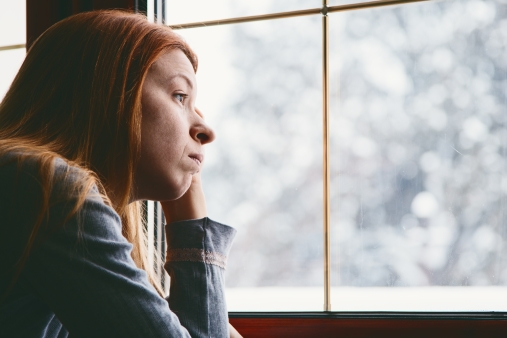
Understanding Seasonal Affective Disorder (SAD): A Guide for Families
Seasonal Affective Disorder, commonly called SAD, is far more common than most people realize. Over 10 million Americans experience SAD annually, with another 10 to 20 million reporting milder symptoms. While often dismissed as “winter blues,” this condition can have a great impact, especially on families, including foster families navigating unique challenges.
This guide will explore what SAD is, how it affects families, activities to pass the time indoors, strategies for improving mood, and where to find help. Whether you’re a parent, a teen, the parent of a child, or someone struggling with SAD, this information is for you.
What Is Seasonal Affective Disorder?
Seasonal Affective Disorder is a type of depression tied to seasonal changes, primarily occurring in the fall and winter months when daylight hours grow shorter. It’s thought to be linked to reduced exposure to sunlight, which affects serotonin levels (a brain chemical that regulates mood) and melatonin (a hormone regulating sleep cycles).
- Persistent sadness or low mood
- Fatigue or lack of energy
- Difficulty concentrating
- Loss of interest in activities
- Changes in sleep patterns (oversleeping is common)
- Increased appetite, often with a craving for carbs
- Feelings of hopelessness or worthlessness
While SAD can affect anyone, those in northern climates or regions with longer and darker winters are more susceptible.
How SAD Impacts Families
SAD affects individuals, but its ripple effects often extend to family dynamics. For families, one member’s struggles with SAD can shift the emotional balance and create unique challenges. Resource families also face additional layers of complexity.
When a parent struggles with SAD, their lack of energy or withdrawal can reduce their ability to engage with children actively.
Many children in foster care have experienced trauma and are particularly sensitive to changes in their caregivers’ emotional stability. When a resource parent struggles with SAD, it might unintentionally worsen the child’s feelings of insecurity or abandonment.
On the other hand, when a child experiences SAD, parents may find it challenging to recognize the symptoms and many children and youth in foster care who experience SAD lack the words or emotional tools to articulate how they’re feeling. As a result, resource parents are unsure how to manage meltdowns cause by the condition. This can strain relationships and negatively affect overall household harmony.
Recognizing the signs of SAD in yourself, your significant other, your children, or your foster children is the first step toward managing its effects.
If you are in Luzerne or Wyoming Counties and experiencing SAD, contact Families United Network Peer Support for assistance. Peer Support (PS) is a non-clinical service designed to support families and youth in child-serving systems within these counties. The PS team, utilizing their own lived experiences, helps families enhance their strengths to improve functioning at home, school, and in the community.
Stuck Indoors? Fun Activities to Beat the Winter Blues
One way to work around the limitations of winter (shorter days, longer nights) is to bring joy indoors. Here are some creative activities to foster connection:
Create a Cozy Movie Night
Transform your living room into a movie theater. Choose inspiring movies, comedies or favorites from your childhood.
Get Crafty
Arts and crafts are wonderful for distracting the mind and creating something meaningful. If you aren’t Martha Stewart (like most of us), use Pinterest or your local craft store for ideas. The act of creating can help with feelings of accomplishment and boost mood.
Virtual Game Nights
Missing social events? Bring your friends or extended family closer with virtual game nights. Apps like Jackbox, Kahoot, or simple games like “Show and Tell” for younger kids can bridge the gap.
Indoor Scavenger Hunts
Plan a scavenger hunt around the house or even in a single room with clever clues and fun objects to find.
Dance It Out
Clear some space, turn on music, and dance! Movement and music are natural mood boosters and fun for all ages.
Build Mini-Routines
Start your own family traditions. Some examples are making Friday pizza night or establishing a middle of the week meal like Taco Tuesdays or Wing Wednesdays.
Strategies to Improve Your Mood
Breaking free from SAD’s grip can take time and effort, but small daily steps can make a big impact on your overall mental health. Here are some ways to help improve your mood throughout the winter season:
Get Some Natural Light
Make it a point to step outside during daylight hours, even if it’s just for a 10-minute walk. Sunlight exposure, even on cloudy days, can positively impact your body’s serotonin production.
Consider a Light Therapy Box
Light therapy boxes mimic sunlight and are especially effective if used in the morning. Consistent use has shown improvements in mood and energy levels.
Exercise Regularly
Exercise increases endorphins––hormones that elevate mood. It doesn’t have to be a 60-minute kickboxing class. Just get your body moving. Walking indoors, taking a yoga class or viewing a YouTube Zumba class can be just as effective.
Stay Connected
Try to reach out to loved ones on a regular basis. Facetime a friend or meet up for coffee. Social isolation worsens SAD symptoms. Being alone makes your mind wander. Distraction is key.
Eat Healthy Foods
Although SAD cravings tend to spike for carbs, try incorporating mood-boosting foods like leafy greens, salmon (a source of Vitamin D), and nuts.
Establish a Routine – Create a Schedule
Sticking to a consistent daily schedule supports mental and emotional stability. This is particularly helpful for children, especially those who might be navigating challenges within foster care.
When SAD Persists, Where to Find Help
While self-help strategies can alleviate symptoms for many, professional help is essential if SAD significantly affects your daily life or relationships. Here’s where you can turn for support:
Therapy
Cognitive Behavioral Therapy (CBT) is effective for SAD, teaching you coping mechanisms and behavioral adjustments to counter depressive patterns.
Medication
For severe cases, a healthcare professional may recommend antidepressants, particularly those that affect serotonin levels.
Community Resources
Local support groups, both in-person and online, can offer an empathetic space to share experiences and get advice.
Talk to a Professional
If you suspect your child or foster child has SAD, speaking with a pediatrician or child psychologist can be extremely helpful. They can provide valuable tools to address the effects on younger individuals. If you are experiencing symptoms of SAD, reaching out to your primary care physician, a therapist, or psychologist can provide additional supports during the winter months.
Lessen the Winter Blues, One Step at a Time
Seasonal Affective Disorder might feel like an inevitable part of winter, but it doesn’t have to control your season or your household. From recognizing the symptoms to finding indoor activities and mood-boosting strategies, there are plenty of ways to lighten the darkness.
For families, especially foster families, these small yet meaningful efforts can strengthen bonds and create memories that transcend the colder months. If you’re struggling, don’t hesitate to reach out to Families United Network. We can help you get the assistance you need. Together, we can make even the gloomiest seasons feel a little brighter.
If you or someone you know is struggling with mental health, reach out for help immediately by contacting a crisis hotline like 988 (Suicide & Crisis Lifeline) to speak with a trained professional, or call 911 in life-threatening situations; you can also consider contacting a mental health professional or a trusted friend or family member for support.
